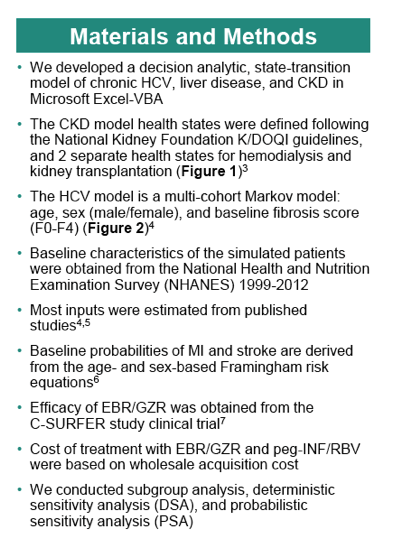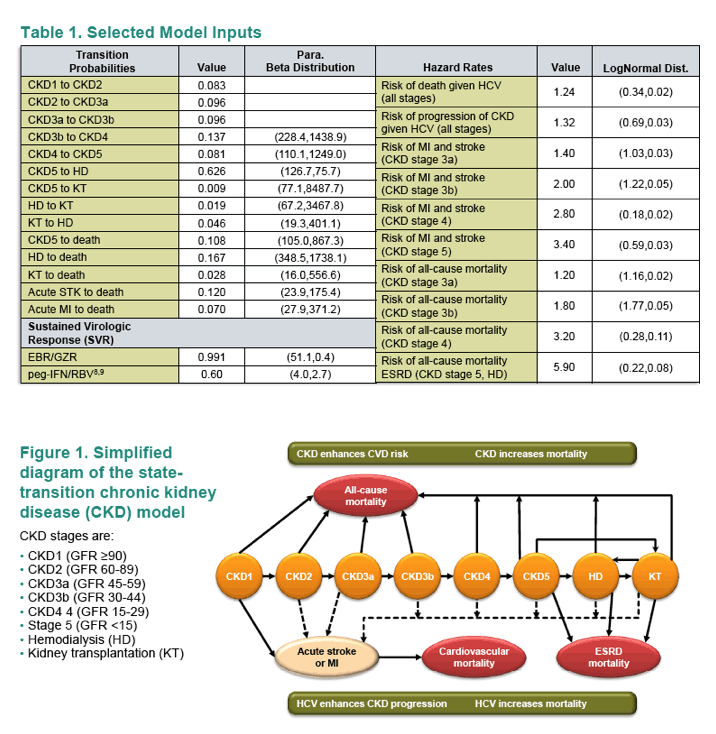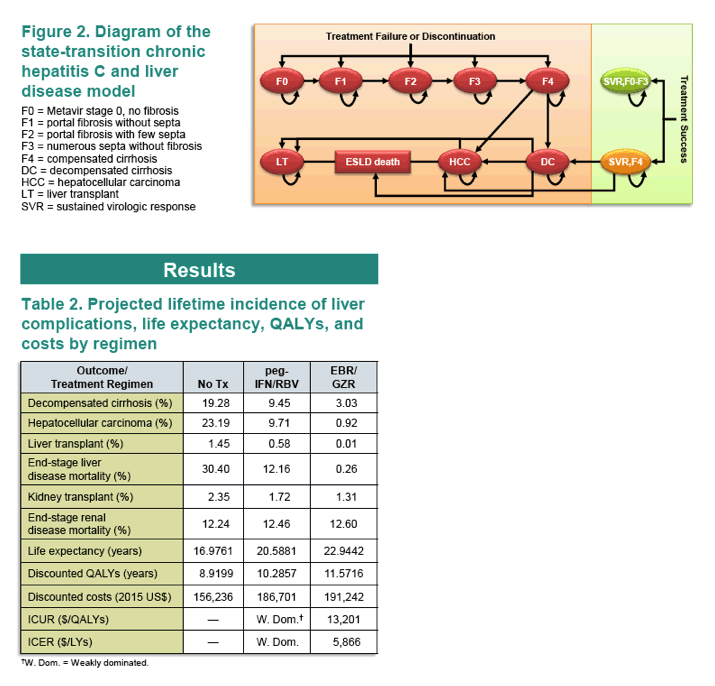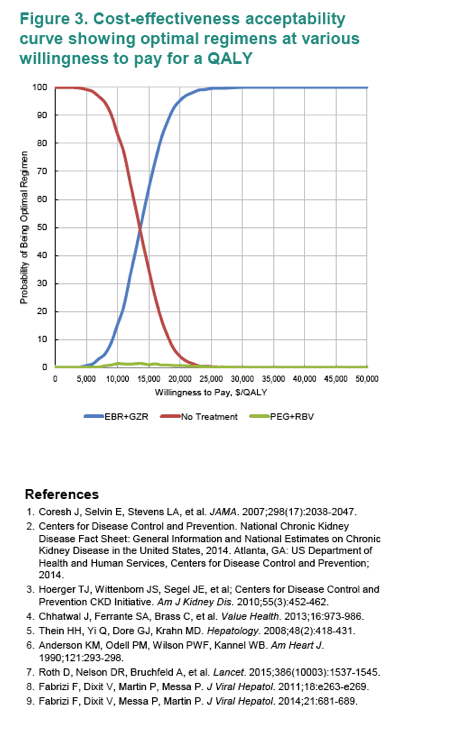 |
 |
 |
| |
Cost-Effectiveness of Elbasvir (EBR, MK-8742)/Grazoprevir (GZR, MK-5172) Use in Treatment-Naïve and Treatment-Experienced Patients with Hepatitis C Virus (HCV) Genotype 1 Infection and Chronic Kidney Disease (CKD) in the Unites States
|
| |
| |
Reported by Jules Levin
EASL 2016 April 14-17 Barcelona
Elamin Elbasha* 1, Wayne Greaves1, Chizoba Nwankwo1
1Merck, Kenilworth, United States
C-SURFER: GRAZOPREVIR PLUS ELBASVIR IN TREATMENT-NAIVE AND TREATMENT-EXPERIENCED PATIENTS WITH HEPATITIS C VIRUS GENOTYPE 1 INFECTION AND CHRONIC KIDNEY DISEASE - (04/23/15)
hepDART: Optimizing Outcomes in HCV Patients: Elbasvir/Grazoprevir: kidney disease/IDUs/resistance (01/04/16)
Merck at AASLD / HepDart 2015 - (01/14/16)


Program abstract
Background and Aims: HCV infection is an important cause of morbidity, end-stage liver disease (ESLD) mortality from decompensated cirrhosis (DC) and hepatocellular carcinoma (HCC), cardiovascular and end-stage renal disease (ESRD) mortality, and costs in CKD patients in the United States. We evaluated the cost-effectiveness of EBR/GZR in CKD patients compared with no treatment (NoTX) and pegylated interferon plus ribavirin (peg-IFN/RBV).
Methods: A computer-based model of the natural history of chronic HCV genotype 1 infection, CKD, and liver disease was developed to project lifetime cumulative incidence of DC, HCC, liver-transplant (LT), kidney transplant (KT), ESLD mortality, ESRD mortality, and associated lifetime costs and quality-adjusted life years (QALY). Efficacy of EBR/GZR of 0.99 (0.95-1.00) was obtained from C-SURFER, a phase 2/3 double-blind, placebo-control trial in HCV genotype 1-infected patients with CKD4/5. Based on a meta-analysis, we assumed an efficacy of 0.60 (0.47-0.71) for peg-IFN/RBV. Data on baseline characteristics of the simulated patients were obtained from NHANES. Other model's inputs were estimated from published studies. Cost of treatment with EBR/GZR was assumed to be similar to that of recently launched directly-acting agents. We conducted Monte Carlo simulations to estimate mean and 95% uncertainty intervals (UI) of outcomes.
Results: Compared with NoTx, use of EBR/GZR was projected to reduce the lifetime cumulative incidence of HCC from an average of 19.96% (UI: 7.25-37.23) to an average of 0.89% (UI: 0.04-3.63) (Figure 1). EBR/GZR-based regimens reduced lifetime cumulative incidence of DC from 8.80% (UI: 3.06-16.97) when peg-IFN/RBV was used to 3.19% (UI: 0.16-11.35). Use of EBR/GZR reduced ESLD mortality to 0.23% (UI: 0.00-0.99) from 10.60% (UI: 3.71-21.31) with peg-INF/RBV and 26.56% (UI: 14.23-41.08) with NoTx. Compared with NoTx, use of EBR/GZR lowered ESRD mortality from 12.70% (UI: 8.41-18.02) to 11.88% (UI: 10.34-13.46). EBR/GZR-based regimens resulted in higher average remaining QALYs and higher costs, and were cost-effective at a threshold of $100000/QALY in 99.8% of the simulations.
Conclusions: Use of EBR/GZR was projected to substantially reduce the incidence of liver- and CKD-related complications and mortality in treatment-naïve and treatment-experienced patients with hepatitis C virus genotype 1 infection and chronic kidney disease. In addition, EBR/GZR is cost-effective in the United States at commonly cited thresholds.




|
| |
|
 |
 |
|
|